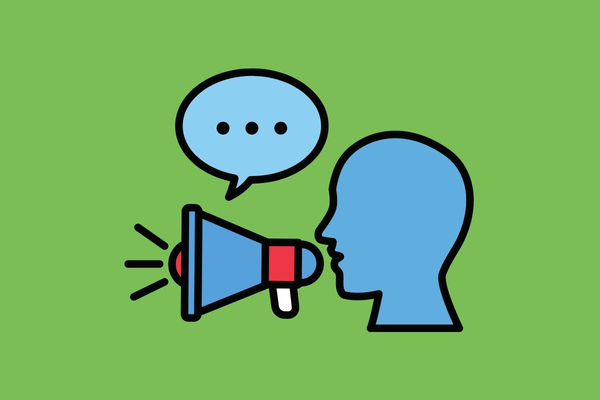Listening skills in the workplace are hugely underrated. Breakdowns in listening can cause unnecessary miscommunication and conflict. Improving your listening skills is one of the most important skills you can develop to impact your working relationship and job satisfaction positively.
Listening skills in communication can lead to increased information sharing contributing to higher productivity levels with fewer mistakes and conflict. Many successful leaders attribute strong listening skills to their success, including Richard Branson, who frequently credits listening as one of the primary reasons behind the success of Virgin.
It’s no surprise that employers are now beginning to understand listening skills’ importance and provide listening training for their employees. Listening skills in the workplace positively correlate with numerous benefits, so it is essential to consider the importance of listening skills and how you can help improve the listening skills of your employees.
What are Listening Skills?
Listening skills demonstrate your ability to accurately receive and interpret messages in the communication process. Active listening is a valuable technique requiring a listener to thoroughly understand, retain and respond to what someone is communicating. There are many types of listening skills in communication. These skills include observing the speaker’s behaviour and body language to understand their message fully.
Why is it Important to Develop Listening skills?
Effective listening skills help you understand and interpret what another person is communicating. Without accurately interpreting what someone else is saying, messages are likely to be misunderstood and quickly lead to conflict.
Article after article demonstrates that active listening is an essential characteristic of communication. So, why is it difficult for some people? We all have co-workers or bosses who interrupt us and scroll through their phone when you’re trying to talk to them.
Peter Nulty, an author of the National Business Hall of Fame, suggests listening skills in the workplace is the most valuable leadership skill and the least understood. “Most captains of the industry listen only sometimes, and they remain ordinary leaders. But a few, the great ones, never stop listening. That’s how they get word of unseen problems and opportunities before anyone else.”
How to Improve Listening Skills in the Workplace
Many active listening techniques are available to help build our listening skills in the workplace. Some of the top ways to improve listening skills include:
- Keep eye contact
- Observe body language
- Pay attention
- Don’t interrupt
- Summarise
- Undergo training
- Complete a DISC Assessment
Keep Eye Contact
It’s not only about what you say to people while listening. Body language also plays an important role. Although it can be intimidating and off-putting to maintain eye contact, it is critical to hold their gaze most of the time. Eye contact is an effective method of expressing interest, comprehension, and attention. Take care to adjust your eye contact to meet the demands of others as well. If you’re interacting with someone shy, avoid direct glances and concentrate on other active listening non-verbal cues.
Observe Body Language
Nonverbal communication accounts for the majority of interpersonal communication. When someone communicates with you, the person’s body language and tone of voice may reveal a lot about their message. It is simple to discern boredom, excitement, or displeasure on someone’s face while speaking based on their eyes, mouth, and posture. To improve listening skills, remember to observe the speaker’s body language.
Pay Attention
Avoid gazing out the window, texting or scrolling through your phone, or scanning a computer screen while listening to someone speak. Limit needless distractions to ensure you give the speaker your complete attention. This gives them a nonverbal indication that you are interested in what they are saying, encouraging them to keep speaking.
Don’t Interrupt
Everyone talks and interprets information at their own pace. If someone is speaking slowly, try to exercise patience and wait for them to complete before rushing them by anticipating what they will say next or responding too soon. Interrupting the speaker gives the wrong message. It may imply that what you have to say is more important, that you are uninterested in what they say, or that the discussion is a competition.
Summarise
Summarising the speaker’s important points is a valuable technique to restate what they’ve expressed in your own words. This is another excellent method for preventing your preconceptions, judgements, and beliefs from distorting the information. Summarising also demonstrates to the speaker that you were paying attention to what they were saying.
Undergo Training
Attending an actively listening course may be sensible if you find active listening challenging. These courses give you an in-depth understanding of active listening. In the course, they teach you how to listen carefully, comprehend what you’ve heard, and reply accordingly.
Complete a DISC Assessment
A strong level of self-awareness is required for good communication skills. Understanding your unique communication style will significantly contribute towards assisting you in making positive and lasting impressions on others. A DISC assessment is a great way to build self-awareness and understand your communication tendencies.
What Causes Poor Listening?
Often, we are in a rush to communicate our message and don’t leave room for the other person to respond. Or, sometimes, we are too focused on what we are going to say next. As a result, when we aren’t talking, we are thinking about how to respond. There are many barriers to effective listening. The four main causes of poor listening are:
- Lack of concentration
- Listening too attentively
- Jumping to conclusions
- Focusing on delivery and appearance
Other barriers to active listening include distractions from other people, electronic devices, or competing thoughts. Often, a lack of self-awareness around our communication and listening tendencies can also contribute to the causes of poor listening.
We need to use all tools available to us to improve how we listen to other Team Members. Two ways to do this are through the use of DISC and active listening techniques.
What are the Four Types of Listening Skills
Combining DISC theory with proven active listening techniques can significantly improve listening skills. Employing these listening skills types will drastically improve how we listen to others.
The three main types of listening skills are:
- Empathetic Listening
- Critical Listening
- Appreciative Listening
- Discriminative Listening
Empathetic Listening
Research shows that active listening, combined with empathy is one of the most effective forms of listening. Active and empathetic listening involves using non-verbal cues, such as facial expressions and body language, i.e. nodding of the head, to display attentiveness.
Effective, empathetic listening also involves verbal cues such as summarising a conversation or asking for clarification to demonstrate understanding. Sample phrases include: “I would like to hear more about your perspective” or “here are a couple of key points that I heard from this meeting.”
Critical Listening
Critical listening is the process a listener goes through to listen, analyse, and evaluate a message. The listener derives whether the speaker’s message is valid and accurate in light of factual evidence. Without critical listening, we are more likely to be persuaded by illogical and untrue communication based more on opinion than fact.
Appreciative Listening
With this technique, listeners are listening for enjoyment, admiration, or pleasure. A good example is listening to music where we listen for entertainment or relaxation. Another example is motivational speakers who we hold in high regard and listen to as we admire them.
Ultimately, engaging with others in a way that suits their behavioural style, taking the time to listen and respond, rather than endlessly debating, are the keys to improving listening skills. Understanding various listening techniques can also build awareness of how we are listening or not listening to someone. Using these theories and methods, we can drastically improve our listening skills.
Discriminative Listening
Discriminative listening is the first type of listening skill you develop. Everyone is born with innate discriminative listening abilities. Discriminative listening relies on the tone of voice, linguistic signals, and other variations in sound rather than words. Discriminative listening is critical because it conveys the meaning hidden beneath the words.
Before they can grasp words, newborns use discriminative hearing to understand the intent of a phrase. If you speak to them in a cheerful and amused tone of voice, they will respond with a smile and a giggle. Or when listening to a conversation in a foreign language, you will most likely engage your discriminative listening abilities.
Discriminative listening techniques allow you to evaluate tone and inflection to understand better what is going on. Essentially, discriminative hearing enables us to extract emotions from another person’s voice. This listening skill can assist you in reading between the lines and understanding what is left unsaid.
How to Improve Listening Skills using DISC
A listening skills assessment such as a DISC assessment can help us recognise how we naturally approach listening and any development areas we need to improve. Our development areas require us to use more energy and effort. Bringing these to the forefront of our awareness helps us actively focus on things we may not do when listening to someone else. Once we are aware of our listening strengths and development areas, we can begin to make small adjustments to listen to others impressively. A team profile assessment can help improve the effectiveness of the workforce in a relatively short space of time.
We typically teach businesses a three-step model to improve listening skills using a DISC listening skills assessment during listening training.
- Step one: Learn to recognise the similarities and differences between the four primary DISC personality types. Understand your unique DISC Style and how you prefer to communicate and listen.
- Step two: Learn how to recognise other DISC Styles. There is a very high possibility your team members will not have the same DISC Style as you and will not communicate in the same way.
- The personality types have preferred ways in which they are more comfortable when interacting with others. Some DISC personality types share similarities in their approach to communication, and some are very different.
- D styles listen to short explanations, want to know how it will benefit them, and become impatient if the conversion is dragging on.
- I styles typically do not listen for too long, and they prefer to be the one that is talking. I personality types like to participate in discussions as a way of socialising.
- S styles are generally good listeners. They are very patient and pay attention for a long time. They can see things from many points of view and can therefore offer help to others. Even if they disagree with what is being said, an I personality type’s non-verbal communication will show the opposite.
- C styles are very eager to learn if they are interested in a conversation. They have difficulty listening if a conversion is not presented logically and often look for errors.
- Taking our learnings from step one, we can begin to understand how our communication and listening approach may differ significantly from the person sitting next to us. We can apply these learnings to know how to improve listening skills in the workplace.
- Step three: Modify your DISC style to communicate more effectively with others. Once you have made these adjustments to your listening style, you can better engage others. Your team members will be attentive to what you are saying, and you will most likely achieve a better outcome.
DISC is not about changing everything about yourself. DISC theory’s philosophy is to understand yourself and others around you better and consider making small adjustments during crucial moments in your interactions with others. These modifications may be as simple as taking the time to have a detailed conversation, being brief with your interactions, or being more upbeat when interacting with a colleague. The result will benefit both you as a leader and maximise the exchange of ideas and information.




